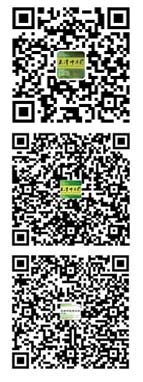| 摘要: |
| [目的] 研究帕金森病疲劳症状中医证候要素特征。[方法] 将83例帕金森病患者按照帕金森疲劳量表(PFS-16)分数标准分为疲劳组(PFS-16≥3.3,32例),非疲劳组(PFS-16<3.3,51例),采用帕金森病证候要素量表(PD-PES-13)进行证候要素辨别,比较两组中医证候要素积分和所占比例的差异以及复合证候要素分布情况,采用Logistic回归法分析中医证候要素对帕金森病疲劳发病的危险性。[结果] 疲劳组脾虚证、血虚证的比例显著高于非疲劳组(P<0.05或P<0.01),脾虚证、血虚证、气虚证积分显著高于非疲劳组(P<0.05或P<0.01)。疲劳组脾虚+髓减、脾虚+血虚、肾虚+阴虚复合证候要素比例显著高于非疲劳组(P<0.05或P<0.01)。脾虚、血虚证候要素对帕金森病疲劳发病具有危险性(OR=3.500,P=0.008;OR=2.678,P=0.038);脾虚+血虚、脾虚+髓减、肾虚+阴虚复合证候要素对帕金森病疲劳发病具有危险性(OR=6.000,P<0.001;OR=2.923,P=0.022;OR=2.679,P=0.034)。[结论] 脾虚、血虚和复合证候要素脾虚+血虚、脾虚+髓减、肾虚+阴虚在伴有疲劳的帕金森病患者中出现频率更高,且可能是其发病的危险因素。 |
| 关键词: 帕金森病疲劳症状 中医证候要素 危险因素 |
| DOI:10.11656/j.issn.1672-1519.2021.10.08 |
| 分类号:R241 |
| 基金项目:教育部长江学者和创新团队发展计划项目(IRT0810);中央高校基本科研业务费专项基金项目(2019-JYB-TD-007;2019-JYB-JS-066);中医药传承与创新“百千万”人才工程(岐黄工程)岐黄学者项目。 |
|
| Study on the traditional Chinese medicine syndrome elements characteristics of fatigue symptom in Parkinson's disease |
|
YAO Xuan1, SHI Jin1, LI Ting1, QIN Bin2, XIAO Weizhong3, TIAN Jinzhou1
|
|
1.The 3th Area of Encephalopathy Departrnent, Dongzhimen Hospital of Beijing University of Chinese Medicine, Beijing 100700, China;2.Beijing Hospital, Beijing 100730, China;3.Third Hospital of Peking University, Beijing 100191, China
|
| Abstract: |
| [Objective] To study the traditional Chinese medicine(TCM) syndrome elements characteristics of Parkinson's disease fatigue. [Methods] The 83 Parkinson's disease patients were divided into fatigue group (PFS-16 ≥ 3.3, 32 cases) and non-fatigue group (PFS-16<3.3, 51 cases) according to the Parkinson's fatigue scale (PFS-16) score. TCM syndrome elements of two groups were diagnosed by the pattern element scale of Parkinson's disease (PD-PES-13). The difference in the score and ratio of TCM syndrome elements in the two groups were compared, and the Logistic regression was used to calculate the risk of TCM syndrome elements on Parkinson's disease fatigue. [Results] The ratio of spleen deficiency syndrome and blood deficiency syndrome in fatigue group were significantly higher than those in non-fatigue group (P<0.05 or P<0.01). The scores of spleen deficiency syndrome, blood deficiency syndrome and qi deficiency syndrome elements in fatigue group were significantly higher than those in non-fatigue group (P<0.05 or P<0.01). The ratio of spleen deficiency plus marrow reduction compound syndrome elements, spleen deficiency plus blood deficiency compound syndrome elements and kidney deficiency plus yin deficiency compound syndrome elements in fatigue group were significantly higher than those in non-fatigue group(P<0.05 or P<0.01). Spleen deficiency and blood deficiency syndrome elements were dangerous to the onset of Parkinson's disease fatigue (OR=3.500, P=0.008;OR=2.678, P=0.038);spleen deficiency plus marrow reduction, spleen deficiency plus blood deficiency and kidney deficiency plus yin deficiency compound syndrome elements were dangerous to the onset of Parkinson's disease fatigue (OR=6.000, P<0.001;OR=2.923, P=0.022;OR=2.679, P=0.034). [Conclusion] The main syndrome elements of Parkinson's disease fatigue are spleen deficiency, blood deficiency, and compound syndrome elements:spleen deficiency plus blood deficiency, spleen deficiency plus marrow reduction, kidney deficiency plus yin deficiency, and they may be risk factors for its onset. |
| Key words: fatigue symptom in Parkinson's disease traditional Chinese medicine syndrome elements risk factors |
